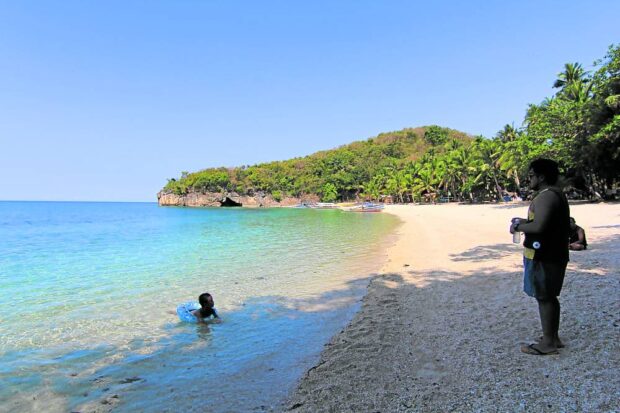Plan to quarry Tayabas Bay opposed anew

TAYABAS BAY. Lucena City’s coastal area hugs a portion of Tayabas Bay, one of its residents’ primary sources of livelihood, in this aerial photo taken June 2023. Photo by Danny Ordonez, contributor
LUCENA CITY — Fisherfolk and environmentalists in Quezon province have opposed another plan to conduct seabed quarrying in Tayabas Bay, as they prepared a petition that would be sent to local government units in areas facing this important body of water in Calabarzon (Cavite, Laguna, Batangas, Rizal, Quezon) region.
“We strongly oppose any application for any kind of activity that could harm Tayabas Bay, such as mining and quarrying, even if it’s still in the exploration stage,” said part of the petition signed on Wednesday during an environmental paralegal training for fish wardens initiated by Tanggol Kalikasan (TK) in Tayabas City.
According to the petitioners, if Tayabas Bay is destroyed due to these threats, thousands of fishermen and residents would be affected as they would lose their livelihood and food source for their families and communities.
TK obtained a copy of an application for an exploration permit in a section of Tayabas Bay in Padre Burgos town, covering 1,079 hectares.
According to the application, which was filed by a businessman in Lucena City, the exploration aims “to determine the presence of marine sand in the project area for reclamation purposes.”
Article continues after this advertisementCiting government documents, Jay Lim, TK project officer, said they were worried about the project since the planned seabed quarrying would cover not only Tayabas Bay but also the waters of Batangas and Cavite provinces.
Article continues after this advertisement“It (exploration) will cause massive damage and losses in fishing grounds and the fragile marine ecosystems that we are trying to protect and rehabilitate,” Lim said.
Tayabas Bay, located northwest of the island province of Marinduque, stretches from San Juan town in Batangas province to the towns of Sariaya, Pagbilao, Padre Burgos, Agdangan, Unisan, Pitogo, Macalelon, General Luna, Catanauan, Mulanay, and San Francisco and Lucena City in Quezon.
Thirty-four of Quezon’s 42 towns are coastal settlements—17 along Lamon Bay in the Pacific Ocean, 12 along Tayabas Bay and five along the Ragay Gulf.
Appeal
Lim appealed to the local governments and the Department of Environment and Natural Resources (DENR) to reject the application.
“They had successfully prevented it before; they can do it again,” Lim said.
On March 3, 2021, the Bureau of Fisheries and Aquatic Resources rejected two applications for seabed quarrying covering more than 18,000 ha in Tayabas Bay.
The local governments of at least seven towns facing the bay, including Padre Burgos, and the provincial legislative board also opposed the applications.

THREATENED BEAUTY. Tourists enjoy the white sand and clear waters around Borawan Island, a popular tourist haven in Tayabas Bay in Padre Burgos, Quezon in these photos taken in 2017. Tanggol Kalikasan claim areas like this will also be affected once the government approves the proposed seabed quarrying in the area. PHOTO BY DELFIN T. MALLARI JR. INQ
Franco Bondeci, Padre Burgos municipal agriculturist, said the local government had yet to receive a copy of the latest application for an exploration permit.
In January, Quezon Gov. Angelina Tan, the province’s mayors, and representatives from the DENR, law enforcement networks and environmentalist groups formed the Marine Protected Area Network to protect and preserve the seas around Quezon. A protected area is an identified portion of land and water with unique physical and biological significance that is protected by law against destructive exploitation.
Threats
According to TK, the continuous increase in the demand for sand, gravel and filling materials for large construction projects has led contractors to resort to seabed quarrying, where the seafloor is scraped to extract materials.
“If seabed quarrying is carried out in rich seas like Tayabas Bay, what will happen to nature and the livelihoods of those who depend on it?” TK said in a statement.
Illegal sand quarrying along the coast of Tayabas Bay has also returned, the group said. Most of these illicit activities were happening on the shores of Sariaya town, where nesting sites of “pawikan” (sea turtles) have been found and protected by local communities.
The unabated sand quarrying caused the seawater to advance and occupy sizable portions of coconut plantations. INQ